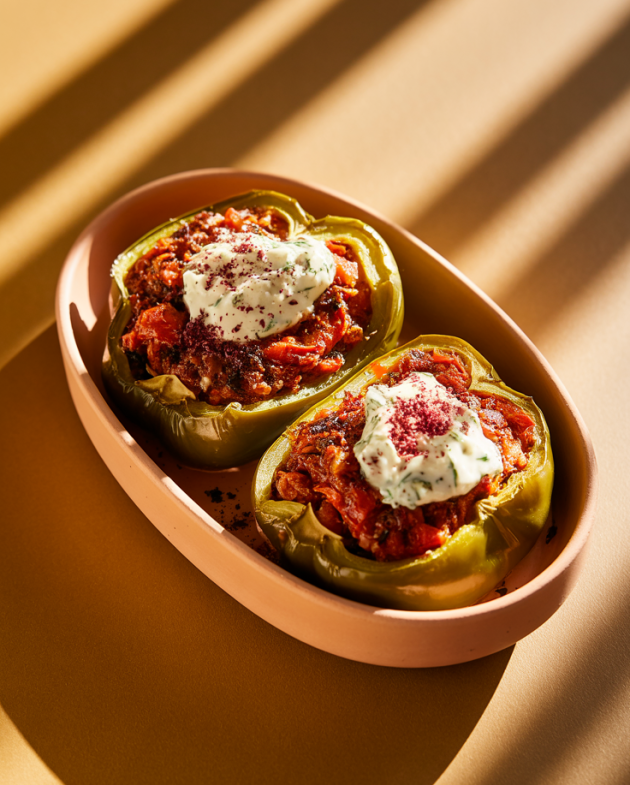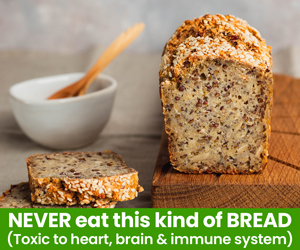Gather These Items Before You Begin:
- Large Mixing Bowl
- Measuring Cups and Spoons
- Loaf Pan (approx. 9x5 inches) or Baking Sheet
- Small Skillet (if sautéing vegetables)
- Spatula or Large Spoon (for mixing)
- Meat Thermometer (recommended for accuracy)
- Aluminum Foil (optional, for covering)
- Small Bowl (for glaze)
- Basting Brush (for glaze)
- Preheat & Prepare
Set your oven to 375°F (190°C). Lightly grease a standard loaf pan or line a baking sheet with parchment paper if you prefer a free-form loaf.
- Combine Wet Ingredients
In a large bowl, gently whisk the eggs. If using sautéed onions or garlic, add them here once cooled slightly. Add any liquid flavorings like Worcestershire sauce (check for sugar content) or coconut aminos now.
- Add Meat & Dry Ingredients
Add the ground beef (or meat blend) to the bowl. Sprinkle the almond flour or crushed pork rinds, Parmesan cheese (if using), salt, pepper, onion powder, garlic powder, Italian seasoning, and any other chosen spices or herbs over the meat.
- Mix Gently
Using your hands or a sturdy spoon, mix the ingredients until just combined. Overmixing can make the meatloaf tough. Be thorough but gentle.
- Shape the Loaf
Transfer the mixture to the prepared loaf pan, pressing gently to fill the corners. Or, shape it into a rectangular loaf on the prepared baking sheet. Avoid packing it too tightly.
- Prepare the Glaze (Optional)
In a small bowl, whisk together the sugar-free ketchup or tomato paste, sweetener (if using), vinegar, and any other glaze ingredients until smooth.
- First Bake
Place the meatloaf in the preheated oven. Bake for 30 minutes.
- Apply Glaze (Optional)
After 30 minutes, carefully remove the meatloaf from the oven. Brush the glaze evenly over the top and sides.
- Second Bake
Return the meatloaf to the oven and continue baking for another 20-30 minutes, or until the internal temperature reaches 160°F (71°C) on a meat thermometer inserted into the center. Cooking time may vary based on loaf shape and oven.
- Rest is Best
Once cooked, remove the meatloaf from the oven and let it rest in the pan or on the baking sheet for at least 10 minutes before slicing. This step allows the juices and fats to redistribute, resulting in a more moist and flavorful slice.
- Serve
Slice and serve warm with your favorite keto-friendly side dishes.
(Note: Exact nutrition values depend heavily on specific brands of ingredients used, especially sweeteners and cocoa powder. These are estimates.)
- Calories:350
- Total Carb:5 g
- Fiber:1 g
- Net Carb:4 g
- Fat:25 g
- Protein:25 g
- Sugar:1 g
A Comforting Low Carb Meatloaf Recipe Remembered

This easy low carb meatloaf recipe brings back the warm feelings of familiar meals shared. It’s like finding an old, treasured photograph tucked away in a book. We take the heart of a classic dish and gently shape it to fit a healthier way of eating, keeping all the satisfying flavor you recall. This isn’t just food; it’s a connection to simpler times, remade for today’s table. Making a homemade low carb meatloaf becomes a simple act of creating comfort.
Meatloaf itself feels like a well-worn armchair in the world of food – dependable, sturdy, and always welcoming. Its story stretches back further than many think, a tale woven through times of thrift and times of plenty. It was a dish born from making the most of what was available, a culinary hug passed down through kitchens. Now, we adapt that spirit, crafting a simple low carb meatloaf that honors the past while nourishing the present. It’s about finding that balance, that perfect bite that feels both new and deeply familiar.
Echoes from Old Kitchens: Meatloaf’s Journey
The idea of mixing ground meat with other bits and baking it isn’t new. You can find cousins of meatloaf in many European food traditions, dishes designed to stretch precious meat and use up leftovers. Think of German Hackbraten or Belgian vleesbrood. These were practical plates, built from necessity but loved for their hearty nature. They were the sturdy foundations upon which the American meatloaf would later be built, each culture adding its own small touches, like adding different spices or using local meats.
When meatloaf truly found its place on the American table, it was often during leaner years, like the Great Depression. It became a symbol of home cooks’ cleverness, turning simple ground meat into a filling meal for the whole family. Recipes from that time show a focus on stretching ingredients, using fillers like bread or crackers. It was food meant to satisfy deeply, a warm presence on the dinner plate that spoke of care and resourcefulness. This history gives the dish a certain weight, a feeling of resilience baked right in. It’s more than just ground meat; it’s a story of making something wonderful from humble beginnings.
Why Old Ways Don’t Fit the Keto Path
The traditional meatloaf, the kind many remember from childhood kitchens, holds ingredients that clash with the keto way of life. The most common issue is the binder. Old recipes almost always called for breadcrumbs, cracker crumbs, or even oatmeal. These act like sponges, soaking up juices, but they bring a heavy load of carbohydrates. A single slice could contain enough carbs to disrupt ketosis, the state where your body burns fat for fuel instead of sugar. It’s like trying to fit a square block into a round hole – it just doesn’t align with the low-carb goal.
Another hurdle is the glaze. That sweet, tangy topping often brushed on top? It’s usually packed with sugar, often from ketchup, brown sugar, or molasses. These sugars add quick carbs and can spike blood sugar, the opposite of what keto aims for. Even seemingly small amounts can add up quickly. Sometimes, very lean ground meats were used to cut fat, but the keto approach favors higher fat content for energy and fullness. The old ways, while comforting in memory, need a careful update to match this specific dietary path, turning it into a healthy low carb meatloaf.
Finding a Place on the Keto Table

So, how does this beloved dish find its way back into a keto kitchen? By making smart swaps that keep the spirit alive while respecting the low-carb rules. This keto meatloaf recipe becomes relevant again because it focuses on what the diet prioritizes: healthy fats, moderate protein, and very few carbohydrates. It fits perfectly, offering a satisfying, savory meal without derailing progress. It proves that comfort food and healthy eating can walk hand-in-hand.
This transformation makes it more than just dinner; it’s a satisfying solution. For someone following a ketogenic plan, finding familiar foods remade can feel like a victory. This easy keto meatloaf provides that hearty, fulfilling experience many crave, using ingredients that support their goals. It’s proof that you don’t have to give up cherished mealtime memories. Instead, you adapt them, creating new traditions built on the foundation of the old, perfect for a low carb meatloaf for dinner.
Forgotten Fillers and Modern Makeovers
Looking back at very old meatloaf recipes, or regional variations, reveals some surprising ingredients once used. Before commercially produced breadcrumbs were common, cooks used what they had. Stale bread, soaked in milk, was a frequent binder. Sometimes, cooked rice or potatoes found their way into the mix, adding bulk and moisture. These ingredients, common pantry staples of their time, are carb-heavy and unsuitable for a strict low-carb approach.
Today, we replace these old fillers with clever keto-friendly alternatives. Instead of breadcrumbs, we might use almond flour, ground pork rinds (chicharrones), or even grated Parmesan cheese. These options provide binding and texture without the high carb count. Milk, once used for moisture, can be replaced with unsweetened almond milk, broth, or simply omitted, relying on the fat in the meat and eggs for richness. It’s like restoring an old piece of furniture – keeping the original shape but using new materials to make it strong and suitable for modern use, resulting in the best low carb meatloaf.
Special Touches for Your Keto Meatloaf
Making a truly great keto meatloaf involves more than just swapping breadcrumbs. Thinking about the details helps create a dish that’s not just low-carb, but deeply satisfying and nourishing in ways that support a ketogenic lifestyle. These ideas help elevate your simple keto meatloaf from good to outstanding.
Balancing Flavors and Body Needs
When you reduce carbs, paying attention to electrolytes like sodium and potassium becomes important. This recipe naturally includes salt, but using ingredients like mushrooms (for potassium and umami) or spinach can add nutritional value. Be mindful of hidden carbs in store-bought spice blends; using individual spices or a trusted homemade low carb onion soup mix gives you control. For an extra layer of savory depth without carbs, consider adding a teaspoon of mushroom powder or a dash of coconut aminos to the mix – these are unexpected ways to build flavor.
Perfecting the Keto Texture and Fat Content
The choice of ground beef matters. An 80/20 blend (80% lean, 20% fat) is often recommended. This fat ratio provides moisture and flavor, crucial for keto satiety. Don’t fear the fat; it’s key! When choosing a binder, consider the options: almond flour adds a subtle nutty taste, crushed pork rinds offer zero carbs and a lighter texture, while psyllium husk or flax meal can also work but may alter the final feel. For a surprising internal texture, try mixing in a quarter cup of finely chopped walnuts or sunflower seeds. Finally, letting the meatloaf rest after baking isn’t just for juiciness; it allows the fats to redistribute evenly, ensuring each slice delivers that satisfying keto macro balance.
Customizing Your Comfort Loaf
If dairy is a concern, swap Parmesan cheese for nutritional yeast or a dairy-free alternative. Many keto meatloaf recipes use cheese, but it’s adaptable. If your glaze uses a sugar substitute like erythritol (found in Swerve, be aware that some people can experience digestive upset with sugar alcohols; start with a small amount if you’re unsure. Move beyond basic tomato toppings! Try a glaze made from balsamic vinegar reduced with a keto sweetener, a tangy mustard and herb blend, or even top slices with a creamy, low-carb mushroom sauce for a different experience. These low carb meatloaf ideas keep things interesting.
Smart Prep for Easy Keto Living
This homemade low carb meatloaf is excellent for meal prep. Bake as directed, cool completely, then slice into portions that fit your daily macros. Freeze individual slices separated by parchment paper in freezer bags or containers. This makes tracking easy. Don’t discard the flavorful fat rendered during baking! Strain it and save it in the fridge; beef tallow is a fantastic fat for cooking other keto meals. When serving, pair your meatloaf with high-fiber, low-carb sides like roasted broccoli, cauliflower mash, or a large green salad with an olive oil dressing to create a well-rounded keto plate. A well-formulated meal like this helps maintain steady energy levels, supporting the goals of a ketogenic diet.
Tools for the Task
- Large Mixing Bowl
- Measuring Cups and Spoons
- Loaf Pan (approx. 9×5 inches) or Baking Sheet
- Small Skillet (if sautéing vegetables)
- Spatula or Large Spoon (for mixing)
- Meat Thermometer (recommended for accuracy)
- Aluminum Foil (optional, for covering)
- Small Bowl (for glaze)
- Basting Brush (for glaze)
Nutrition Profile & Timing
This is an estimate; actual values vary based on specific ingredients.
- Difficulty: Easy
- Prep time: 20 minutes
- Cook time: 50-60 minutes
- Rest time: 10 minutes
Per Serving (assuming 6 servings):
- Calories: Approx. 350-450 kcal
- Total Carbohydrates: Approx. 5-8g
- Fiber: Approx. 1-2g
- Net Carbohydrates: Approx. 4-6g
- Protein: Approx. 25-35g
- Fat: Approx. 25-35g
- Sugar: Approx. 1-2g
- Sugar Alcohols: Varies depending on sweetener used in glaze (if any). Check product label.
Crafting Your Keto Meatloaf: Step-by-Step
- Preheat & Prepare: Set your oven to 375°F (190°C). Lightly grease a standard loaf pan or line a baking sheet with parchment paper if you prefer a free-form loaf.
- Combine Wet Ingredients: In a large bowl, gently whisk the eggs. If using sautéed onions or garlic, add them here once cooled slightly. Add any liquid flavorings like Worcestershire sauce (check for sugar content) or coconut aminos now.
- Add Meat & Dry Ingredients: Add the ground beef (or meat blend) to the bowl. Sprinkle the almond flour or crushed pork rinds, Parmesan cheese (if using), salt, pepper, onion powder, garlic powder, Italian seasoning, and any other chosen spices or herbs over the meat.
- Mix Gently: Using your hands or a sturdy spoon, mix the ingredients until just combined. Over-mixing can make the meatloaf tough. Be thorough but gentle.
- Shape the Loaf: Transfer the mixture to the prepared loaf pan, pressing gently to fill the corners. Or, shape it into a rectangular loaf on the prepared baking sheet. Avoid packing it too tightly.
- Prepare the Glaze (Optional): In a small bowl, whisk together the sugar-free ketchup or tomato paste, sweetener (if using), vinegar, and any other glaze ingredients until smooth.
- First Bake: Place the meatloaf in the preheated oven. Bake for 30 minutes.
- Apply Glaze (Optional): After 30 minutes, carefully remove the meatloaf from the oven. Brush the glaze evenly over the top and sides.
- Second Bake: Return the meatloaf to the oven and continue baking for another 20-30 minutes, or until the internal temperature reaches 160°F (71°C) on a meat thermometer inserted into the center. Cooking time may vary based on loaf shape and oven.
- Rest is Best: Once cooked, remove the meatloaf from the oven and let it rest in the pan or on the baking sheet for at least 10 minutes before slicing. This crucial step allows the juices and fats to redistribute, resulting in a more moist and flavorful slice.
- Serve: Slice and serve warm with your favorite keto-friendly side dishes.
Notes for Keto Success:
- For strict keto, double-check all spice blends for hidden sugars or starches.
- For nut allergies, always use pork rinds instead of almond flour.
- For dairy-free, use nutritional yeast and omit cheese.
- For extra potassium, include spinach and mushrooms.
Kitchen Wisdom & Common Questions
Here are answers to frequent questions about making the best low carb meatloaf:
Why did my meatloaf fall apart?
This usually happens due to not enough binder (egg or low-carb filler like almond flour/pork rinds) or over-mixing, which breaks down the meat’s structure. Ensure you have adequate binder and mix gently until just combined. Resting before slicing also helps it hold its shape.
How can I prevent a dry meatloaf?
Use ground beef with sufficient fat content (80/20 is ideal). Avoid overcooking; use a meat thermometer to pull it out at 160°F. Adding finely chopped sautéed vegetables (like onions or mushrooms in moderation) can add moisture. Don’t pack the meat mixture too tightly into the pan.
Can I substitute the ground beef?
Yes, ground turkey, chicken, pork, or a mix can be used. Keep in mind leaner meats like turkey or chicken might result in a drier meatloaf. Consider adding some ground pork or extra fat if using very lean poultry.
How should I store and reheat leftovers?
Store leftover meatloaf tightly covered in the refrigerator for 3-4 days. Reheat slices gently in the microwave, oven (covered with foil at 300°F until warm), or in a skillet over medium-low heat. You can also freeze cooked meatloaf (whole or sliced) for up to 3 months.














